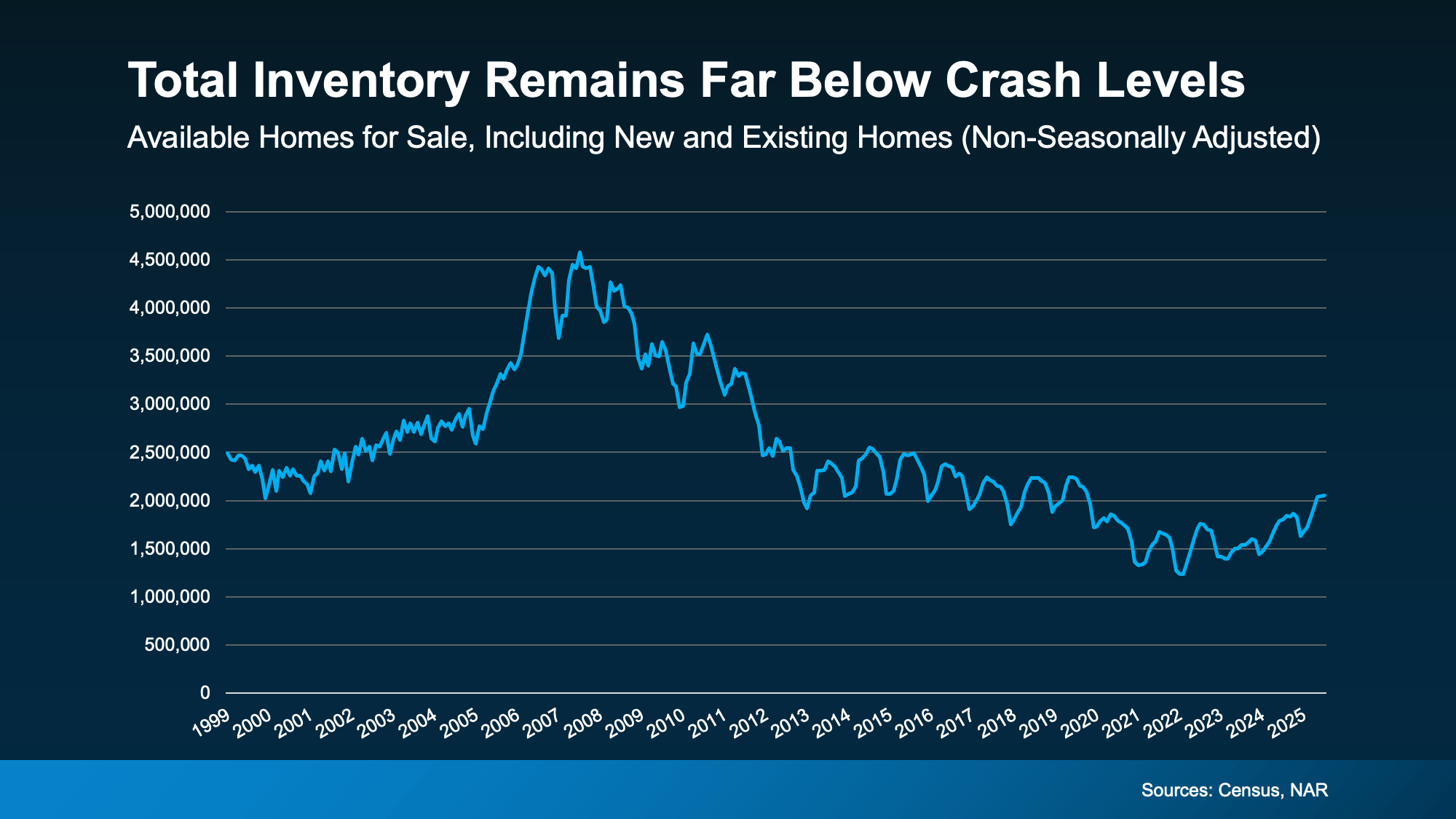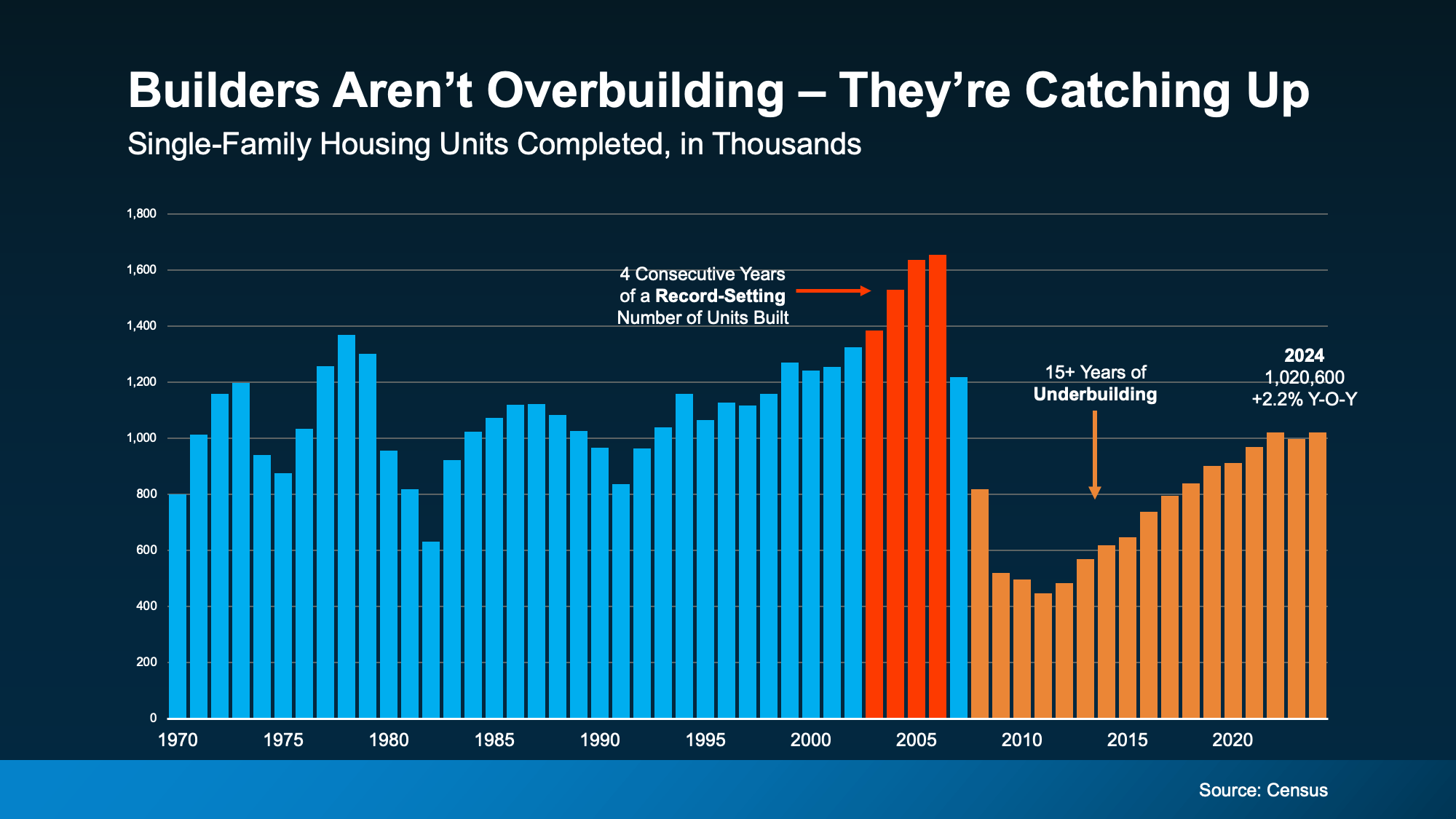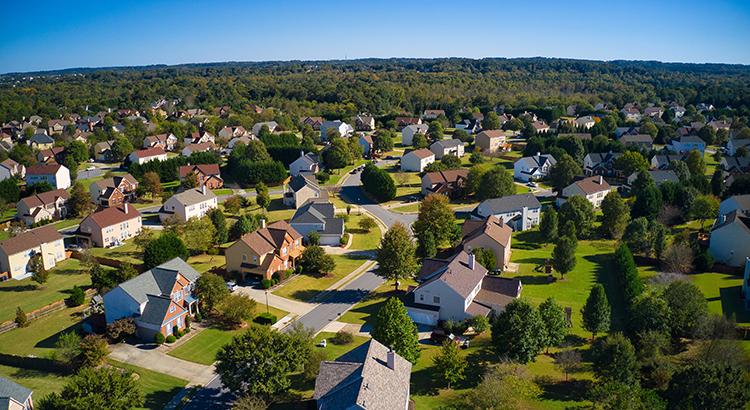What Everyone’s Getting Wrong About the Rise in New Home Inventory

What Everyone’s Getting Wrong About the Rise in New Home Inventory

You may have seen talk online that new home inventory is at its highest level since the crash. And if you lived through the crash back in 2008, seeing new construction is up again may feel a little scary.
But here’s what you need to remember: a lot of what you see online is designed to get clicks. So, you may not be getting the full story. A closer look at the data and a little expert insight can change your perspective completely.
Why This Isn’t Like 2008
While it’s true the number of new homes on the market hit its highest level since the crash, that’s not a reason to worry. That’s because new builds are just one piece of the puzzle. They don’t tell the full story of what’s happening today.
To get the real picture of how much inventory we have and how it compares to the surplus we saw back then, you’ve got to look at both new homes and existing homes (homes that were lived in by a previous owner).
When you combine those two numbers, it’s clear overall supply looks very different today than it did around the crash (see graph below):
 So, saying we’re near 2008 levels for new construction isn't the same as the inventory surplus we did the last time.
So, saying we’re near 2008 levels for new construction isn't the same as the inventory surplus we did the last time.
Builders Have Actually Underbuilt for Over a Decade
And here’s some other important perspective you’re not going to get from those headlines. After the 2008 crash, builders slammed on the brakes. For 15 years, they didn’t build enough homes to keep up with demand. That long stretch of underbuilding created a major housing shortage, which we’re still dealing with today.
The graph below uses Census data to show the overbuilding leading up to the crash (in red), and the period of underbuilding that followed (in orange):
 Basically, we had more than 15 straight years of underbuilding – and we’re only recently starting to slowly climb out of that hole. But there’s still a long way to go (even with the growth we’ve seen lately). Experts at Realtor.com say it would roughly 7.5 years to build enough homes to close the gap.
Basically, we had more than 15 straight years of underbuilding – and we’re only recently starting to slowly climb out of that hole. But there’s still a long way to go (even with the growth we’ve seen lately). Experts at Realtor.com say it would roughly 7.5 years to build enough homes to close the gap.
Of course, like anything else in real estate, the level of supply and demand is going to vary by market. Some markets may have more homes for sale, some less. But nationally, this isn’t like the last time.
Is the rise in new home inventory a sign of a market crash? We debunk common myths and reveal what the numbers truly mean for buyers and sellers. Read now.
- New home inventory
- Housing market trends
- Real estate myths
- New construction homes
- Housing supply
- Home builder inventory
- Real estate market analysis
- Buyer's market vs. seller's market
- Housing bubble 2025
- What does rising new home inventory mean for buyers?
- Common misconceptions about the housing market
- Is an increase in new homes a sign of a market crash?
- Understanding the rise in new housing supply
- How new construction affects existing home prices
- New home inventory impact on sellers
Understanding the current real estate landscape requires a nuanced look at the data, especially concerning new home inventory. While headlines might suggest an oversupply, a deeper analysis reveals a more complex picture. Reports from the U.S. Census Bureau show a steady increase in new residential construction, but this doesn't automatically signal a downturn. Experts at the National Association of Realtors® point out that this growth is helping to balance a market that has long suffered from a housing shortage. The National Association of Home Builders provides further context, explaining that builder confidence is shaped by factors like supply chain issues and labor costs, not just inventory levels. Financial analysts from sources like Bankrate and Freddie Mac often discuss how this new inventory impacts mortgage rates and affordability for first-time homebuyers. It’s a common misconception that more homes mean a sudden price drop; however, Zillow's market analysis shows that regional demand and existing home sales are still strong drivers of price. Furthermore, data from Redfin indicates that while inventory is up, many of these homes are still under construction and not yet available for move-in. For a comprehensive overview of economic indicators affecting the market, it's helpful to consult resources like the Bureau of Labor Statistics. Ultimately, while the rise in inventory is significant, it's part of a larger, more intricate market adjustment rather than the simple boom-or-bust narrative often portrayed. Staying informed with insights from platforms like HousingWire can help buyers and sellers navigate these changing conditions effectively.
Bottom Line
Just because there are more new homes for sale right now, it doesn’t mean we’re headed for a crash. The data shows today’s overall inventory situation is different.
If you have questions or want to talk about what builders are doing in our area, let’s connect.
Categories
Recent Posts













